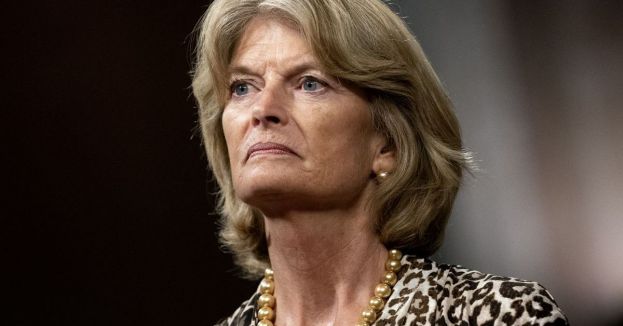Similar to how Rep. Liz Cheney (R-WY) attempted to benefit from Democrat votes in her primary election loss, pro-impeachment Murkowski’s best hope of winning reelection against Tshibaka could be the opposition party.
Preliminary primary voting numbers from August 16 indicate Democrats could have contributed up to 30 points to Murkowski’s five-point edge over Tshibaka (44.6 – 39.3 percent).
The Democrat vote could be just as impactful come November. J. Miles Coleman, the associate editor of Sabato’s Crystal Ball at the University of Virginia Center for Politics, calculated Tshibaka and Murkowski combined for about 85 percent of the open primary vote in which Democrats participated. That is because Alaska has open primaries ahead of a four-way ranked-choice general election, and thereby Democrats were allowed to vote for Murkowski in the primary — and they could select Murkowski as their second choice in the ranked-choice system in November.
MUST WATCH: GIANT EMPEROR TRUMP FIGURE AT ITALIAN FESTIVAL![]()
In total, Democrat candidates in the August 16 primary received just roughly 8.5 percentage points with 90 percent reporting. Yet Democrat candidates usually get between 38 and 40 percent of the general election vote in the largely conservative state, Tshibaka told Breitbart News in August. Coleman calculated the difference can add up to “a sign that Democrats may have supported Murkowski en masse.”
THE ISRAELI RAFAH INVASION PLAN HAS THE WHITE HOUSE IN A TIZZY![]()
The combined 85 percent of the vote between Murkowski and Tshibaka with an assessed 38 to 40 percent overall turnout for Democrats in November means Democrats could account for a significant portion of the pro-Murkowski vote — perhaps approximately up to 30 points — depending on Democrat turnout and how Democrats vote in the ranked-choice voting system.
MUST WATCH: AUSTRALIAN BROADCASTER MOPS THE FLOOR WITH CLIMATE ACTIVISTS![]()
The way Alaska’s ranked-choice general election and open primary system works is as follows: All candidates from all parties appear on the ballot together in the August primary. The top four vote-getters regardless of party then advance to the general election, and there voters are given the opportunity to pick their top choice then their second and third choices. If no candidate in the first round of voters’ first choices gets 50 percent of the vote, then the last place candidate’s second choices are spread across the remaining three candidates to see if someone can get across the majority threshold. If that fails again to produce a majority vote-getter, then a third round is carried out where the third place candidate’s votes are redistributed according to second choices between the remaining two candidates.








 Discover alternative ideas that will make you think
Discover alternative ideas that will make you think Engage in mind bending debate
Engage in mind bending debate Earn points, rise in rank, have fun
Earn points, rise in rank, have fun


